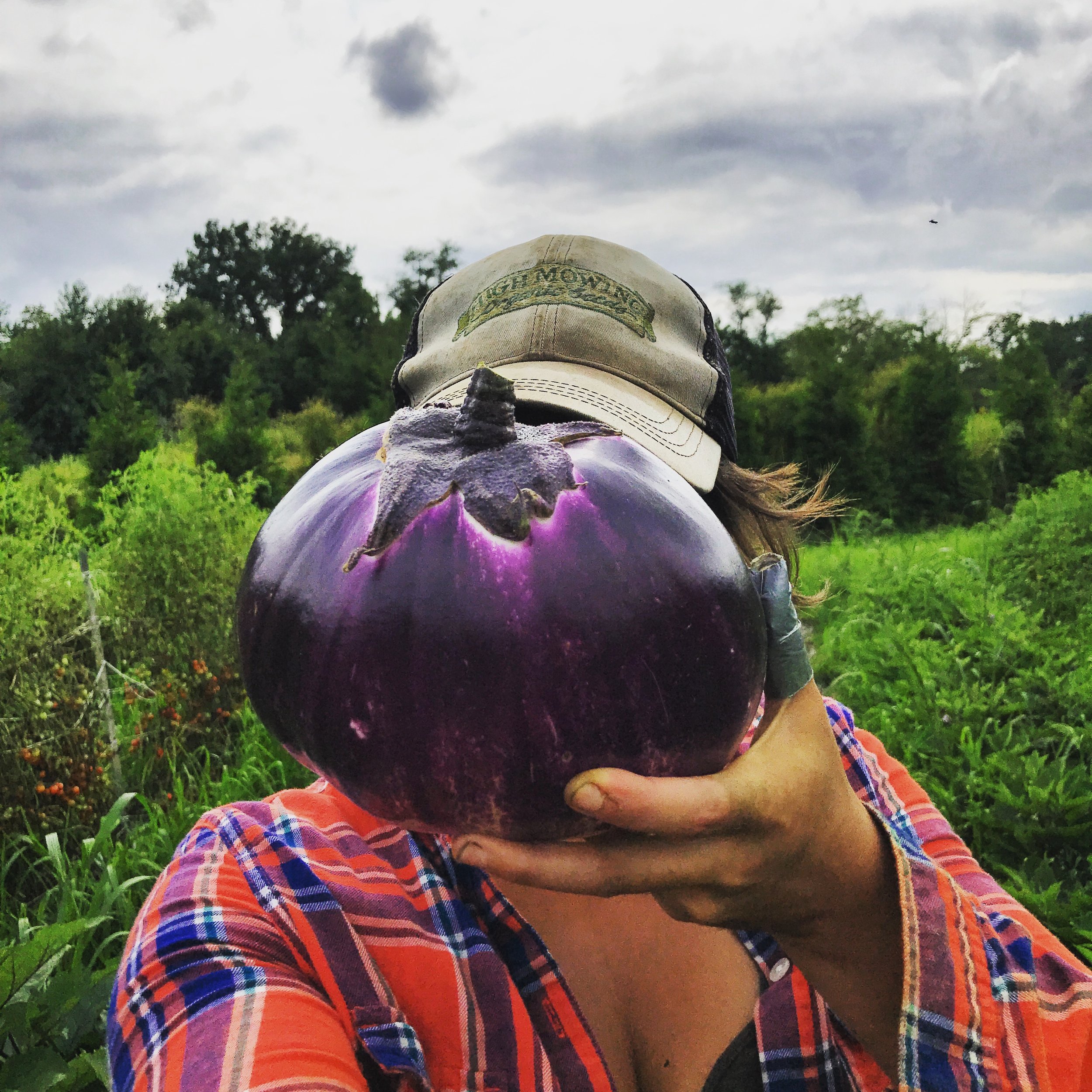Watermelon
I'm stealing what I wrote about watermelon 2 years ago, because I can't say it better than I did then and it's more relevant than ever:
One of our favorite CSA crops is in! Watermelon! It's a crop we don't grow for any other market, because it really isn't that profitable. It takes 3 months to grow, it's incredibly heavy, takes up a lot of room and doesn't go for much of a price. It's impossible to compete with the grocery store's 10 pounders for $3. We grow it for our CSA members and ourselves as the perfect late summer treat. We grow smaller, sweeter varieties that are easier to carry and can be eaten in one sitting.
We also only grow watermelon with seeds. There are a couple of reasons for this decision. Seeds are such an important part of food sovereignty and self sufficiency that we choose not to grow seedless watermelon because of a philosophical stubbornness. We want to, if we choose, to be able to reproduce the vegetables we grow without having to get our seeds from a corporation.
The second reason is that years ago a CSA member who is a mother of 2 daughters, 4 and 6 years old at the time picked up their share during watermelon time and told me her daughters had never eaten a seeded watermelon before. She told me that they had such a fun time eating outside and learning to spit the seeds out. I was shocked. I had spent so many hours of my childhood eating entire watermelons with my friends having competitive seed spitting contests off the back porch. I remember letting the juice drip down my chin to the grass because no one needs a napkin when you're eating outside. Seeds and watermelon were such an important part of my childhood summers and I was so happy to provide that experience for those little girls.
So, we encourage you to revel in the magic of the seeds, eat outside and enjoy the true taste summer.
Scenes from the farm: Duma in the beans, Julie and Steph in the sad tomato forest, the massive eggplant of the year, the sunflower patch at Gravity Hill is blooming!
The Share:
salad mix
head lettuce
basil
swiss chard
watermelon!
sweet peppers
eggplant
fairytale eggplant
summer squash
cucumbers
carrots
basil
scallions
onions
cherry tomatoes
slicing tomatoes
shishito peppers
Recipe of the week: It's time!!
Ratatouille
GOURMET JUNE 1991
YIELD
Serves 4
INGREDIENTS
- 1 onion, sliced thin
- 2 garlic cloves, minced
- 5 tablespoons olive oil
- a 3/4-pound eggplant, cut into 1/2-inch pieces (about 3 cups)
- 1 small zucchini, scrubbed, quartered lengthwise, and cut into thin slices
- 1 red bell pepper, chopped
- 3/4 pound small ripe tomatoes, chopped coarse (about 1 1/4 cups)
- 1/4 teaspoon dried oregano, crumbled
- 1/4 teaspoon dried thyme, crumbled
- 1/8 teaspoon ground coriander
- 1/4 teaspoon fennel seeds
- 3/4 teaspoon salt
- 1/2 cup shredded fresh basil leaves
PREPARATION
- In a large skillet cook the onion and the garlic in 2 tablespoons of the oil over moderately low heat, stirring occasionally, until the onion is softened. Add the remaining 3 tablespoons oil and heat it over moderately high heat until it is hot but not smoking. Add the eggplant and cook the mixture, stirring occasionally, for 8 minutes, or until the eggplant is softened. Stir in the zucchini and the bell pepper and cook the mixture over the moderate heat, stirring occasionally, for 12 minutes. Stir in the tomatoes and cook the mixture, stirring occassionaly, for 5 to 7 minutes, or until the vegetables are tender. Stir in the oregano, the thyme, the coriander, the fennel seeds, the salt, and pepper to taste and cook the mixture, stirring, for 1 minute. Stir in the basil and combine the mixture well. The ratatouille may be made 1 day in advance, kept covered and chilled, and reheated before serving.



